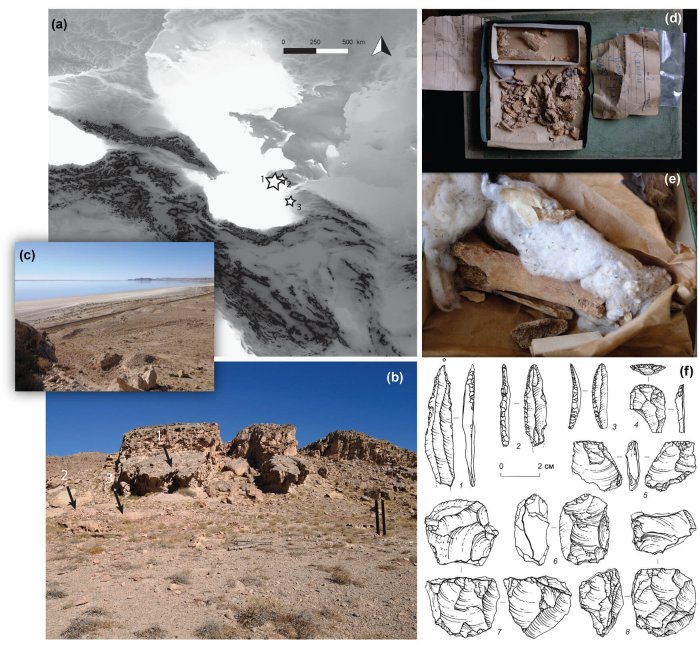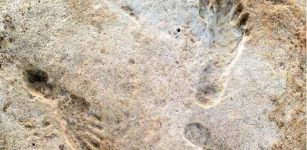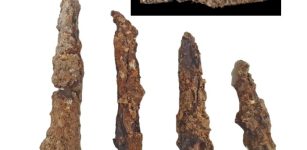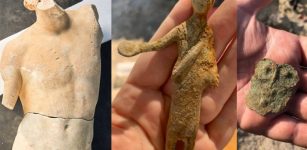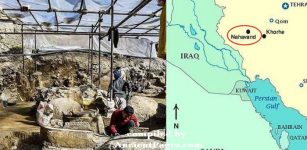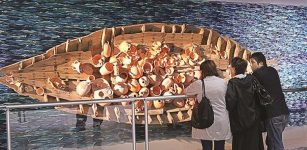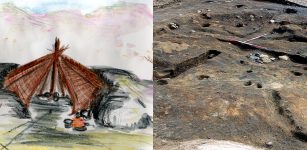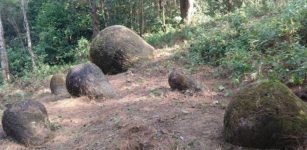Discovered Shell Beads Shed New Light On Stone Age Seafaring
Jan Bartek - AncientPages.com - Stone Age humans may have made extended maritime voyages on the Caspian Sea, according to a new study published in the journal Open Archaeology.
The research analyzed ornamental beads made from the disk-shaped shells of a species of cockle (Didacna sp.) found at the Kaylu rock shelter, a cave-like burial site near the eastern shoreline of the Caspian Sea.
Location of Kaylu archeological site (a no 1), Jebel (a no 2), and Dam-Dam-Cheshme 1 and 2 (a no 3); view of the rockshelter (b1); location of the two burials (b2 and b3); Caspian Sea view from the site (c); human remains state of preservation (d and e); lithic industry from layer 7 of Kaylu (f) – point (1), lunates (2, 3), end-scraper (4), splinted pieces (5, 6), cores (7, 8). Credit: Open Archaeology (2023). DOI: 10.1515/opar-2022-0289
Kaylu was used by Stone Age people over an extended period in the late Mesolithic and Neolithic periods. The transition between these periods is particularly significant in human cultural evolution as it parallels the transition between hunter-gathering cultures and herding and farming cultures, which occurred around 11,500 years ago in the region. Although Kaylu was excavated in the mid-twentieth century, its deposits were poorly described, and it wasn't comprehensively reassessed or directly dated until its rediscovery in 2018.
For this study, lead author Solange Rigaud of the CNRSand University of Bordeaux, France and colleagues used a wide range of tools and techniques to determine how the beads were made and used. Microscopic, morphometric, spectrometric and scanning electron microscopy (SEM) analyses showed a distinct stylistic change between the beads worn by the last hunter-gatherers and the first farmers.
The analyses also enabled the researchers to compare the beads found at Kaylu with others from various sites across the region. Neolithic beads found in the northern, eastern and western Caspian Sea differed significantly enough from those found in the southern region to indicate that they followed a different route of cultural diffusion.
Diversity of the personal ornaments documented at Jeitun, Turkmenistan, Early Neolithic. Credit: Open Archaeology (2023). DOI: 10.1515/opar-2022-0289
It is well-established that the southern Caspian Sea area played a major role in the spread of farming technologies and practices, with the movement of farmers and herders along a route through what is now northern Iran. Rigaud's results suggest that cultural traditions also spread around the northern coastline of the Caspian Sea, independently of the inland route.
See also: More Archaeology News
However, another more exciting explanation is that Stone Age people engaged in maritime voyaging on the Caspian Sea. "Seafaring contacts between these communities may have granted the rapid circulation of specific bead-types—along with people, information, knowledge and symbols—from either side of the Caspian Sea by long maritime voyages," Rigaud said.
The study was published in Open Archaeology
Written by Jan Bartek - AncientPages.com Staff Writer

